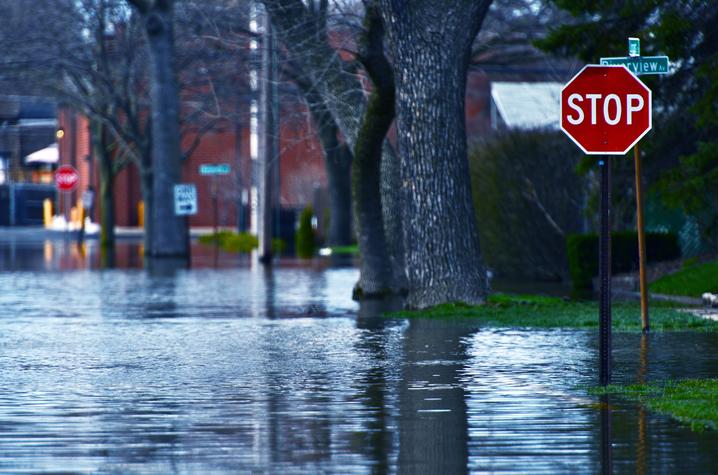UK researchers developing neighborhood-level weather technology

Researchers in the University of Kentucky Karen and Stanley Pigman College of Engineering were awarded $2 million from the National Science Foundation (NSF) to develop a cutting-edge weather forecasting system with the NSF’s National Center for Atmospheric Research (NCAR).
The five-year project, titled “LEAP-HI: Advancing Precision Neighborhood Scale Weather Forecasting with Autonomous Aircraft Systems and Adaptive Microscale Models,” brings together a multidisciplinary team. By combining research expertise in fluid dynamics, computational science, machine learning, atmospheric science, microscale modeling and autonomous unmanned aircraft systems (UAS) operations, the goal is an integrated system to provide decision makers and emergency responders with neighborhood-level weather insights to better prepare for and respond to extreme events.
The Department of Mechanical and Aerospace Engineering’s Sean Bailey, Ph.D., serves as principal investigator and Jesse Hoagg, Ph.D., and Alexandre Martin, Ph.D., serve as co-principal investigators. NSF NCAR’s James Pinto, Ph.D., a senior scientist in the Research Applications Laboratory, also serves as co-principal investigator.
The project aims to close a critical gap in microweather prediction by combining advanced atmospheric measurements, microweather models and machine learning to forecast extreme conditions with unprecedented neighborhood-level precision.
Unlike current weather models, which lack the resolution to capture environmental features, the project examines how urban infrastructure, tree cover, roadway systems and crop lifecycle drive hyperlocal conditions such as heat, wind and air quality extremes.
At the heart of the research is the development of a novel system integrating UAS with a nested, high-resolution numerical weather prediction model. Fleets of small, autonomous aircraft will collect fine-scale atmospheric data, which will be used to refine weather forecasts into accurate depictions of neighborhood-scale weather extremes. Model adaptation and machine learning techniques, combined with microscale weather models, will produce more detailed forecasts for decision-making in real time, while the system learns from past performance relative to UAS observations to correct errors and further improve accuracy.
“The goal of this project is to provide emergency planners with information that can be used to identify where weather events might be amplified by the local environment to produce dangerous conditions,” said Bailey.
The initiative aims to address longstanding challenges in delivering accurate and actionable neighborhood-scale weather forecasts, specifically targeting inaccuracies in how the model treats terrain and local environment conditions. These can lead to significant errors in simulating localized flow fields and turbulence in the lower atmosphere. To address this, the research team will develop a high-resolution surface weather map using offline machine learning and continually adjust its parameters using real-world data collected by the UAS.
“We will start by refining how the weather simulations treat the influence of surface features that are too complex or too small to resolve accurately in the simulation,” said Bailey. “The goal will be to produce high-fidelity maps of these influences that have been tuned to best reproduce local weather patterns.”
Field experiments at the University of Kentucky’s North Farm will be used to develop the system and improve its accuracy. Testing will later move to more complex environments, such as UK’s Lexington campus or the hills of Eastern Kentucky, where local winds and weather can be more variable and extreme.
Research reported in this publication was supported by the U.S. National Science Foundation under Award No. 2450718. The opinions, findings, and conclusions or recommendations expressed are those of the author(s) and do not necessarily reflect the views of the U.S. National Science Foundation.

